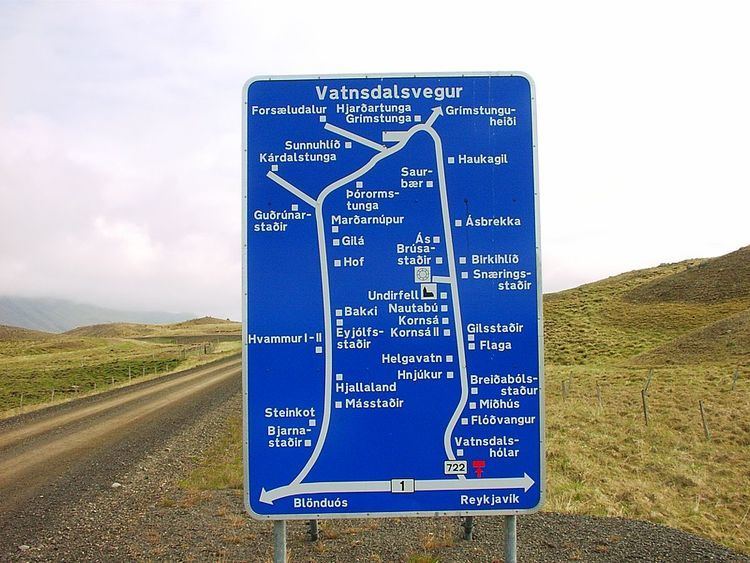 | ||
The modes of transport in Iceland are governed by the country’s rugged terrain and sparse population. The principal mode of personal transport is the car. There are no public railways — although there are bus services. Transport from one major town to another, for example Reykjavík to Akureyri, may be by aeroplane on a domestic flight. The only way of getting in and out of the country is by air and sea. Most of the country's transport infrastructure is concentrated near the Capital Region, which is home to two thirds of the country's population.
Contents
Rail
Iceland has no public railways, although proposals to build a passenger line between Keflavík and Reykjavík have been made as well as proposals to build a light rail system in Reykjavík. Several former locomotive-powered and hand-operated railways have closed and been dismantled, although some evidence of their existence remains in museums and as static exhibits.
Road
Iceland has 12,869 kilometres (7,996 mi) of publicly administered roads, 5,040 kilometres (3,130 mi) of which are paved. Organized road building began about 1900 and has greatly expanded since 1980. Vegagerðin (Icelandic Roads Administration) is the legal owner and constructor of the roads, and oversees and maintains them as well.
Sea
The major harbours in Iceland are:
Merchant marine:
total: 3 ships (with a volume of 1,000 gross register tons (GRT) or over) totaling 13,085 GRT/16,938 tonnes deadweight (DWT)
ships by type: chemical tanker 1, container ship 1, petroleum tanker 1 (1999 est.)
Transport ferries: The only habitable islands around Iceland are supplied and infrastructurally connected with the mainland via ferries which run regularly. Those islands are:
Those ferries are considered part of the infrastructure system such as roads, and are therefore run by Vegagerðin like the roads.
Air
As of 2010, there are 98 airports in Iceland:
Public transport
Strætó bs is a company which operates bus services in The Capital Region and Strætisvagnar Akureyrar operates bus services in Akureyri.
